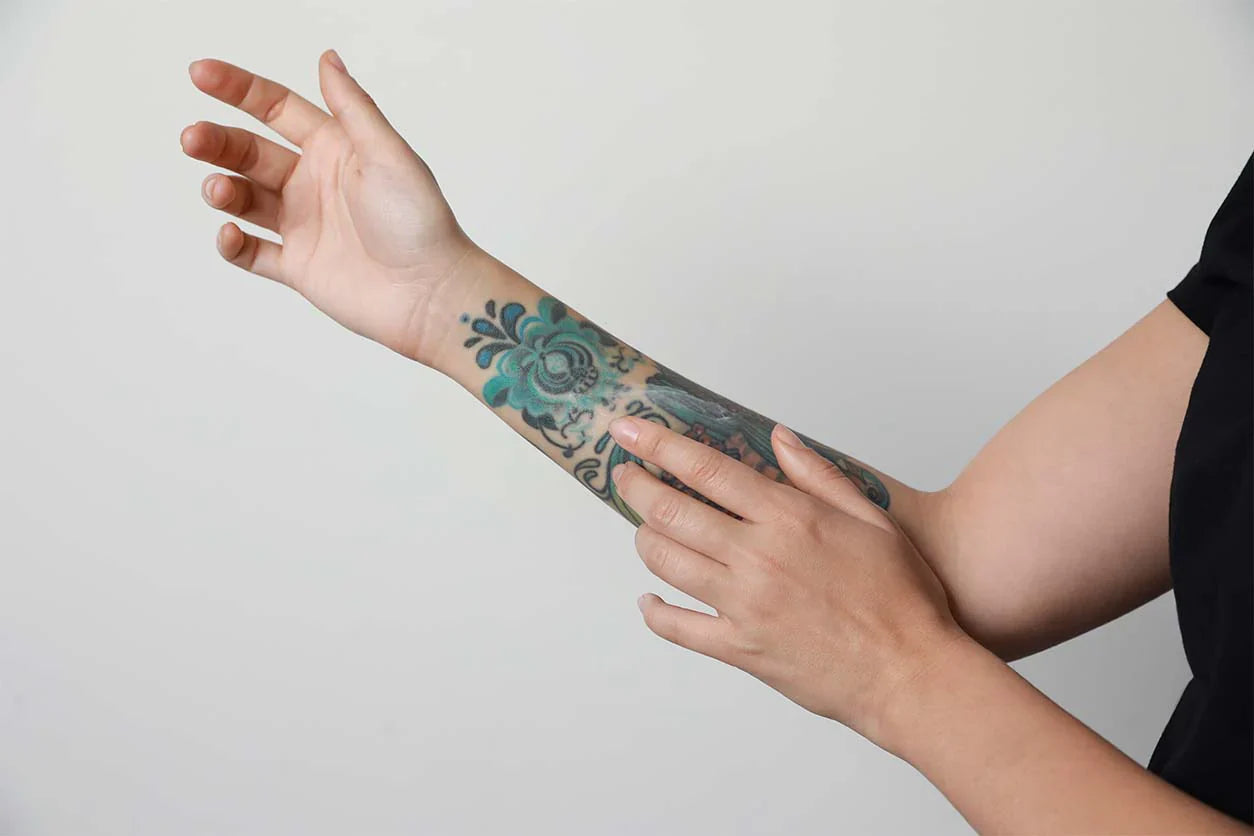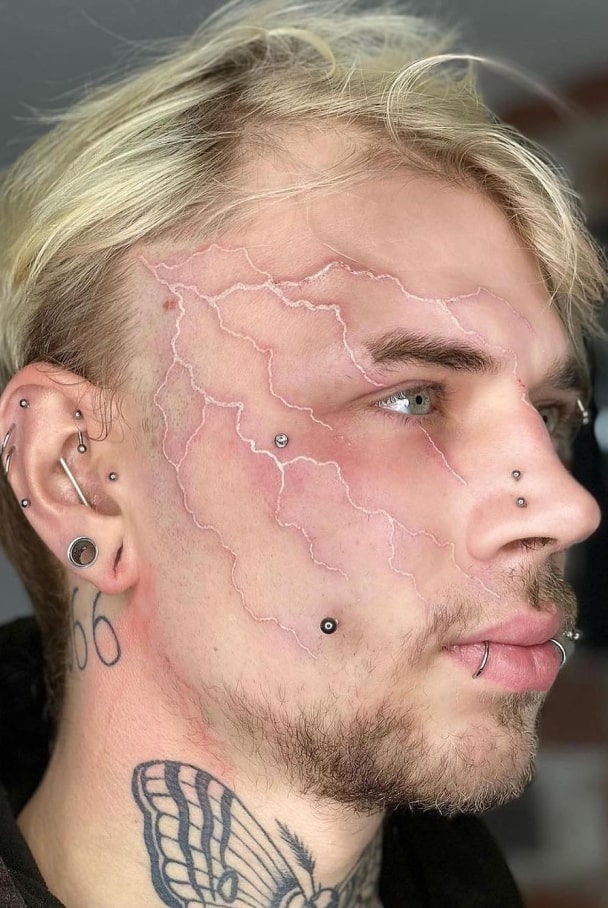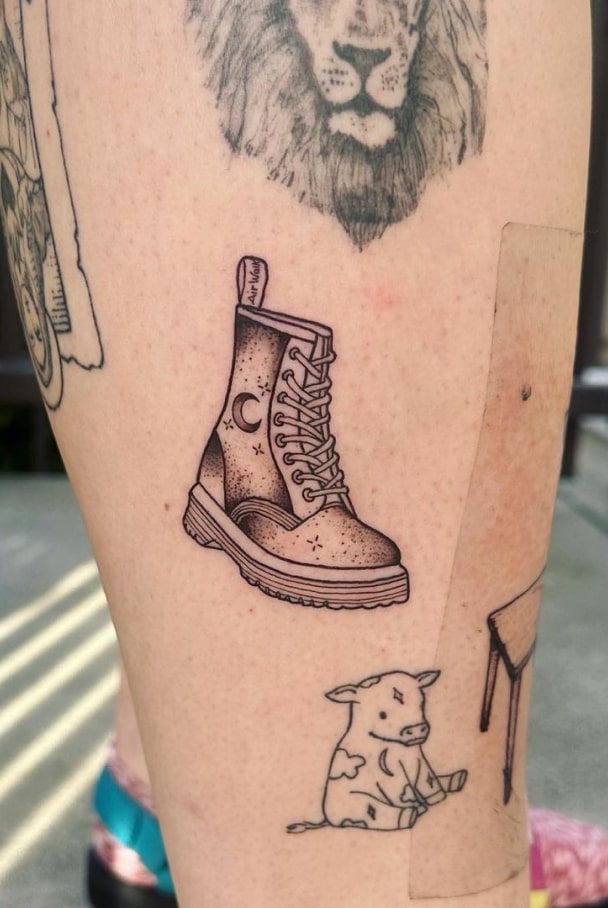Walk into any great tattoo studio and you’ll feel it: calm, organized, professional. Great art starts with great hygiene. Below is your no-nonsense guide to what “safe” really looks like, and the red flags that mean you should walk out before the stencil even lands.
Before You Book: Do Your Homework
-
Licensing & compliance: The studio and each artist should hold current licenses/registrations as required in your area. If you can’t find this info online, ask. A professional will show you without fuss.
-
Healed work > fresh pics: Fresh tattoos look juicy; healed photos prove an artist’s technique and aftercare advice actually work.
-
Policies posted: Look for clear info on deposits, reschedules, age/ID, and aftercare. Disorder here often mirrors disorder in the back room.
Arrival Check: First Impressions Matter
-
Clean reception + bathroom: Floors swept, bins lined, surfaces wiped. If the front is sticky, the station won’t be better.
-
Hand-washing access: There should be a sink with soap and paper towels near work areas, not “we’ll wash in the back later.”
-
No pets, no smoke, no food: Drinks should be covered and away from the workstation. Food on the station is an instant fail.
The Station Setup: What “Clean” Actually Looks Like
-
Barriers on everything: Beds, armrests, clip cords, power supplies, and bottles are wrapped in fresh barrier film.
-
Sterile or disposable tools: Needles/cartridges arrive in sealed, dated pouches and are opened in front of you. Grips/tubes are either disposable or autoclaved and sealed.
-
Fresh single-use items: Razor, ink caps, rinse cup, dental bibs, paper towels—new for every client.
-
Ink handling: Ink is poured into single-use caps. Bottles never touch skin. Leftover cap ink gets tossed, not “topped up.”
-
Rinse water: Should be sterile or distilled, not poured from a random cup at the sink.
-
Sharps & waste: A puncture-proof sharps container is visible on or near the station; red/biohazard bags or lined bins are used for contaminated disposables.
Autoclaves, Tests, and Proof
-
Autoclave on site (or disposables only): If they reuse grips/tubes, they autoclave them.
-
Spore tests/maintenance logs: Pros can show recent results or service records. Indicator strips are good; spore tests are better.
-
Sealed after sterilization: Reusable instruments should be sealed and dated; the pouch gets opened for you.
Gloves, Hands, and Cross-Contamination
-
Hand hygiene: Artist washes hands, dons new gloves to set up, and changes gloves at logical points (after touching drawers, phones, cash, door handles, or your wallet).
-
No bare-hand contact with your skin once setup begins. Barrier first, then clean gloves.
-
Glove swaps happen often: It’s a feature, not a bug. If gloves stay on through every task, that’s a problem.
Stencil, Skin Prep, and During the Session
-
Skin prep: Area is shaved with a new razor, then cleaned with antiseptic.
-
Stencil application: Bottles and applicators are wrapped; product never touches the bottle tip.
-
Work discipline: Wipe → deposit paper towel → back to machine. No bouncing between “dirty” and “clean” without a glove change.
-
You control your body: If something touches the floor or an unwrapped surface, it’s considered dirty. It should be replaced, no debate.
Aftercare and Takeaway
-
Written aftercare: You should leave with clear instructions (and ideally product recommendations) tailored to the style/placement.
-
Touch-up policy: Pros define what’s covered and when to check in.
-
Contact channel: If you have questions during healing, you know exactly how to reach them.
Red Flags: If You See These, Leave
-
“We’ll clean later.” There is no “later” in sterile technique.
-
Unwrapped cords or bottles touching your skin or the station.
-
Reused razors, towels, or ink caps. Non-negotiable exit.
-
No sharps container in sight. Where are the used needles going?
-
Artist touches phone/cash/door and goes straight back to your skin without changing gloves.
-
Open pouches lying around. If it isn’t opened for you, it may not be sterile for you.
-
No sink, no soap, no paper towels in or near work areas.
-
Pets, smoking, food anywhere near the station.
-
“We only use tap water” for rinse cups. Not acceptable.
-
Attitude when questioned. Professionals welcome informed clients.
Questions to Ask (Zero Awkwardness, Pros Appreciate This)
-
“Are needles and grips single-use or autoclaved? Can I see a sealed pouch opened for me?”
-
“Do you keep spore test or maintenance logs for your autoclave?”
-
“What’s your glove-change protocol if you need to grab something outside the station?”
-
“Do you pour ink into single-use caps and discard leftovers?”
-
“What’s your aftercare recommendation for this style/placement?”
Green Flags You’ll Notice in Great Studios
-
The station gets built in front of you, slowly and methodically.
-
The artist narrates safety steps without ego: “I’m changing gloves because I touched the light switch.”
-
Tools are organized; nothing “mystery” sits on the tray.
-
There’s a quiet rhythm: set up clean → tattoo → dispose → re-glove → continue.
-
Staff happily answer questions and encourage you to speak up.
Quick Screenshot Checklist
-
Licences visible
-
Fresh barriers on bed/cords/bottles
-
Sealed needles opened for you
-
New razor, single-use ink caps, sterile/distilled rinse water
-
Hand wash → fresh gloves; frequent glove changes
-
Sharps container + lined biohazard bin in view
-
Written aftercare provided
Bottom line: a safe studio isn’t about vibes, it’s about systems. Sterile tools, clean setups, proper glove discipline, and respectful, transparent communication are the real markers of professionalism. If you spot red flags, you’re not “being difficult” by leaving; you’re protecting your health and your artwork. Screenshot the checklist, bring it to your next session, and get the tattoo you’ll love, safely.
This article is general information, not medical advice. Always follow your local regulations and your artist’s professional guidance.








